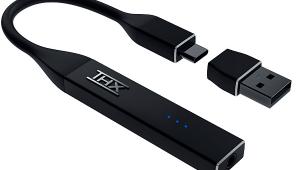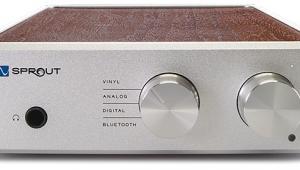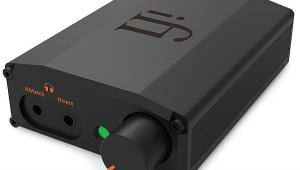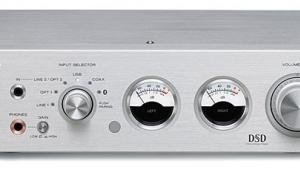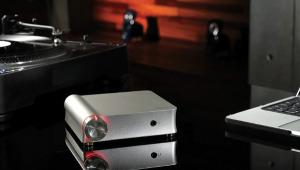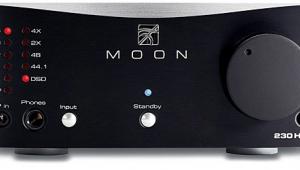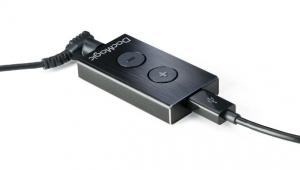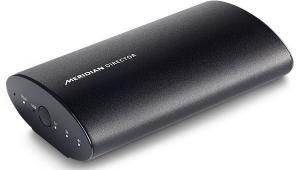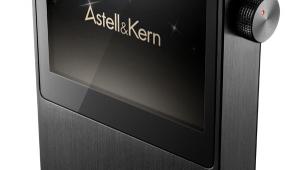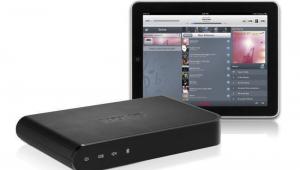AudioQuest DragonFly Red and DragonFly Black Amp/DACs Review Page 2
I switched to another pair of headphones, the Sony MDR-V6. With its tipped-up treble, the Sony is the yin to the Sennheiser’s yang. It casts a merciless spotlight on signal sources and tends to prefer fat, warm ones to thin, ascetic ones—and by the way, all AudioQuest DACs lay claim to an ingratiating warmth in the midrange, though it’s typically subtle. The Sony’s take on the Red was characteristically edgy compared with that of the other two headphones, its take on the Black marginally less comfortable, and its take on the v1.2 about the same as the one on the Black.
The DragonFlys are designed to feed audio systems as well as headphones. Would my desktop system—Era Design 4 speakers, Peachtree Audio Decco2 amp—assert the same pecking order? The Red still seemed to be giving me more information. But the Black, though different, didn’t fall behind this time. The peak hardening went away, and dynamic swings seemed more dramatic. I might have been hearing the difference between the two internal volume controls, Red’s digital and Black’s analog. Or, more likely, this stemmed from the ways that the two DACs, with their different maximum output levels, interacted with my desktop gear. I opened the spigot all the way for the Black in both the computer’s operating system and my music software, controlling volume only with the Peachtree amp. In contrast, the Red’s higher output required a slight cut in the OS, with the amp still providing most of the gain. The old v1.2 took its turn, though I wasn’t as satisfied: For the first time, the Black showed clear gains in subtlety.
Freeform Listening
By this point, having listened to Beethoven’s fate knocking on the door 13 times, I was suffering from Symphonic Derangement Syndrome. It was time for some unstructured listening. The Red and the Black wanted to show me what else they could do. And I wanted to listen more like a civilian, less like a reviewer. Donning the HiFiMan headphones, I meandered through my music library.
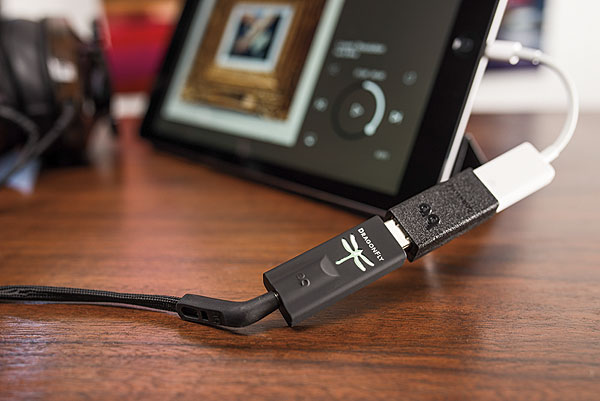
The only new pattern that emerged was how often the Black could sneak up on the Red and offer a different feel, sometimes with improvements. In Lizst’s Liebesträume (ALAC 44.1/16), Evgeny Kissin’s piano was glassier with the Red, more natural with the Black. I couldn’t rule out the possibility that the Red was simply revealing more in the source material. In several tracks from Nick Drake’s Bryter Layter (FLAC 96/24), the Red offered a more complex and closeup account of vocal timbre, but the Black’s treatment emerged as the fuller and more organically believable one.
Let me emphasize, though, that there wasn’t a single truly bad (or even mediocre) demo in the bunch. I was just hearing differences between excellent and various degrees of great. If I hadn’t heard the new models—if I hadn’t eaten from the tree of knowledge—I might have been satisfied with the older one.
In fact, there has never been a bad-sounding DragonFly. And lest we forget what a USB amp/DAC review is really all about, I did one last demo with the PC’s headphone jack feeding the HiFiMan headphones directly. The sound was heavily rolled off, and the output was less than even the least of the DragonFlys’; I had to max the OS and software volume controls to get Beethoven to a satisfying level, with no room to spare. And the HiFiMan isn’t even that hard to drive.
I also briefly tried out the AudioQuest JitterBug, a $49 add-on that’s said to reduce noise, and therefore potentially minimize induced jitter, in USB data and power lines. A/B-ing it in and out with Beethoven, Drake, the DragonFly Red, and the HiFiMan headphones, I didn’t hear a dramatic difference. This may suggest that my notebook happens to have little noise on the USB lines, or the DragonFly offered enough audible jitter reduction by itself to fly solo—good news, no doubt, for prospective buyers of the amp/DAC. As for the audible difference caused by USB-generated noise, I remain agnostic. There may be some. The company may have measured it. But my job is to uncover gross distinctions that matter urgently to readers and are easy to describe in not-too-highfalutin’ language. This one slipped under my radar.
AudioQuest has worked hard to remain the reigning champion of the compact USB amp/DAC. No one matches the company’s intense ongoing product development in this category. But for the first time, with the Red and the Black, it offers two alternatives at once. Which is right for you? If your headphones are tough to drive and you need more output, the Red is the logical choice. If they’re fairly efficient, you’re buying your first DAC, and you don’t want to spend much, the Black is the better value. But the worst possible outcome would be for you to do without a USB amp/DAC altogether. Once you’ve heard what these products can do, listening to your computer’s untreated headphone jack will seem the equivalent of trading a drink of pristine mountain water for raw sewage.
- Log in or register to post comments
